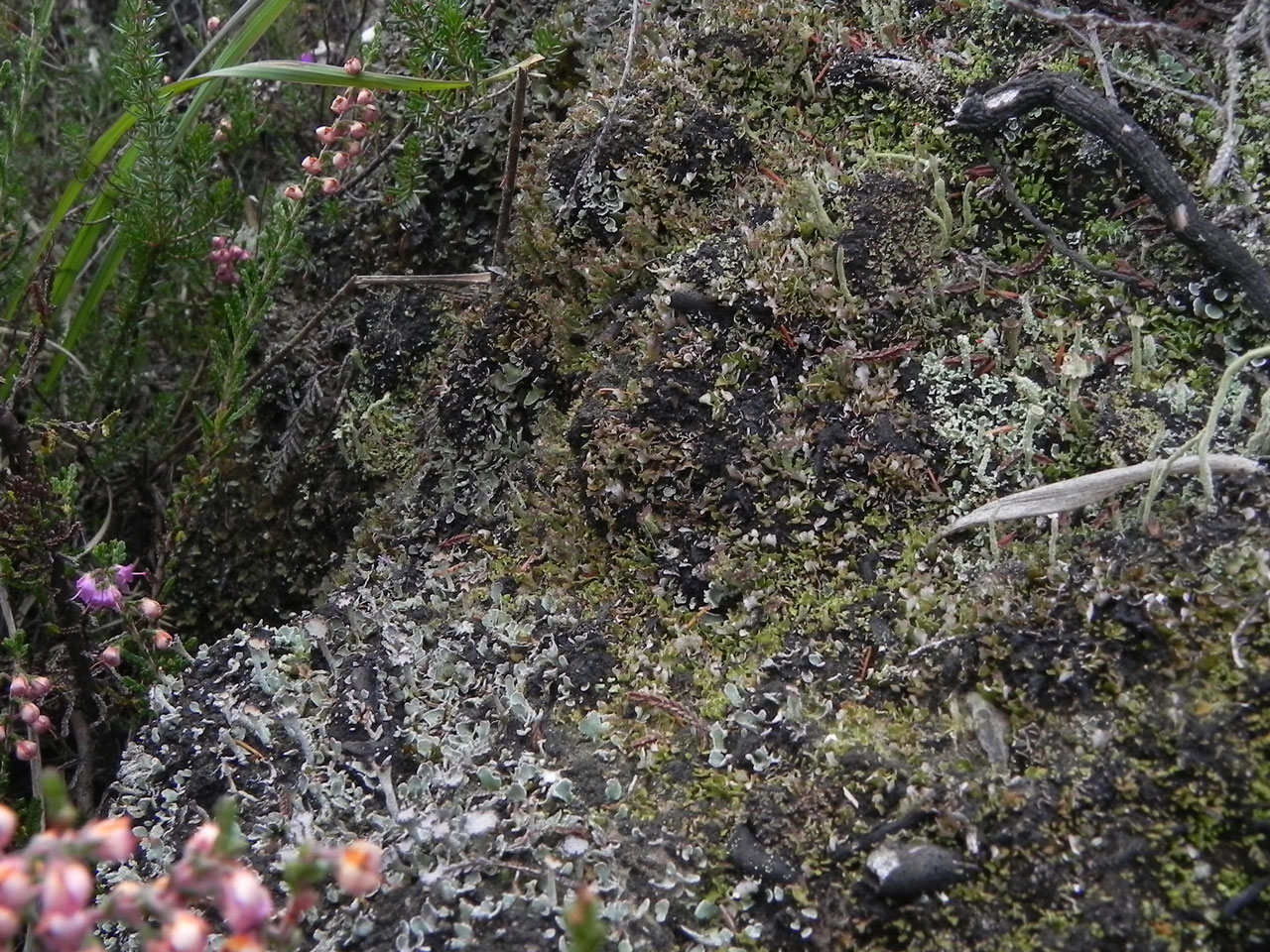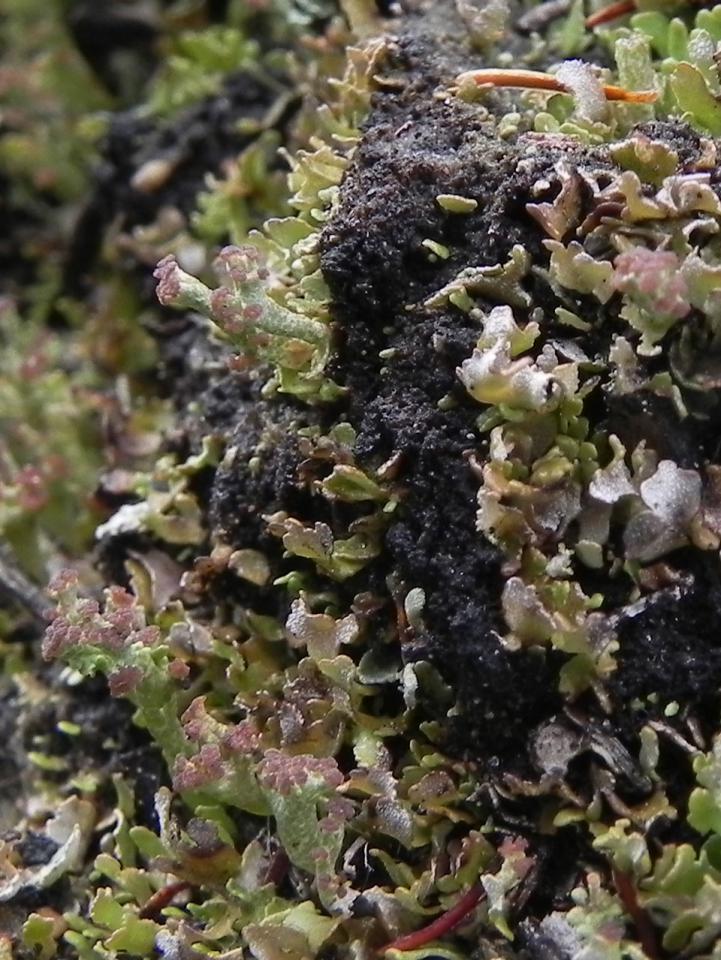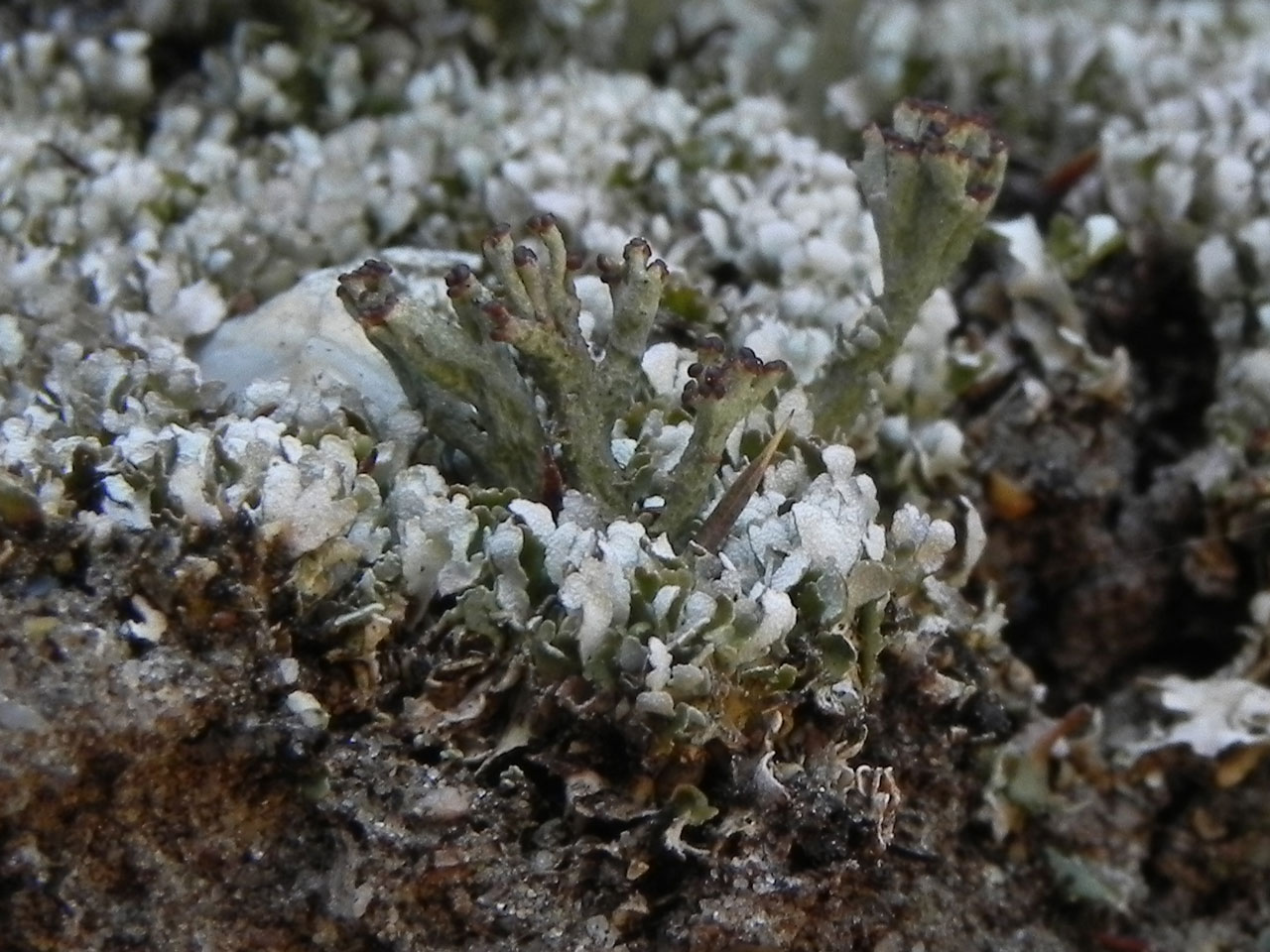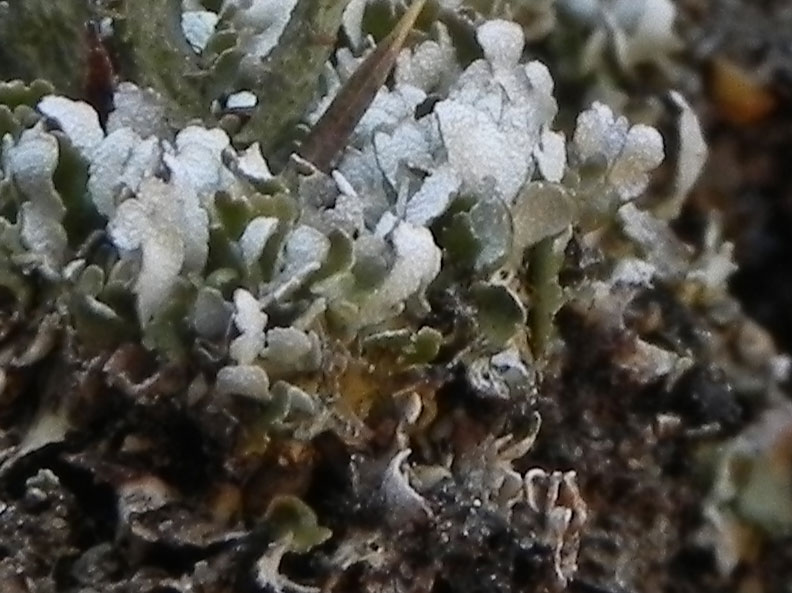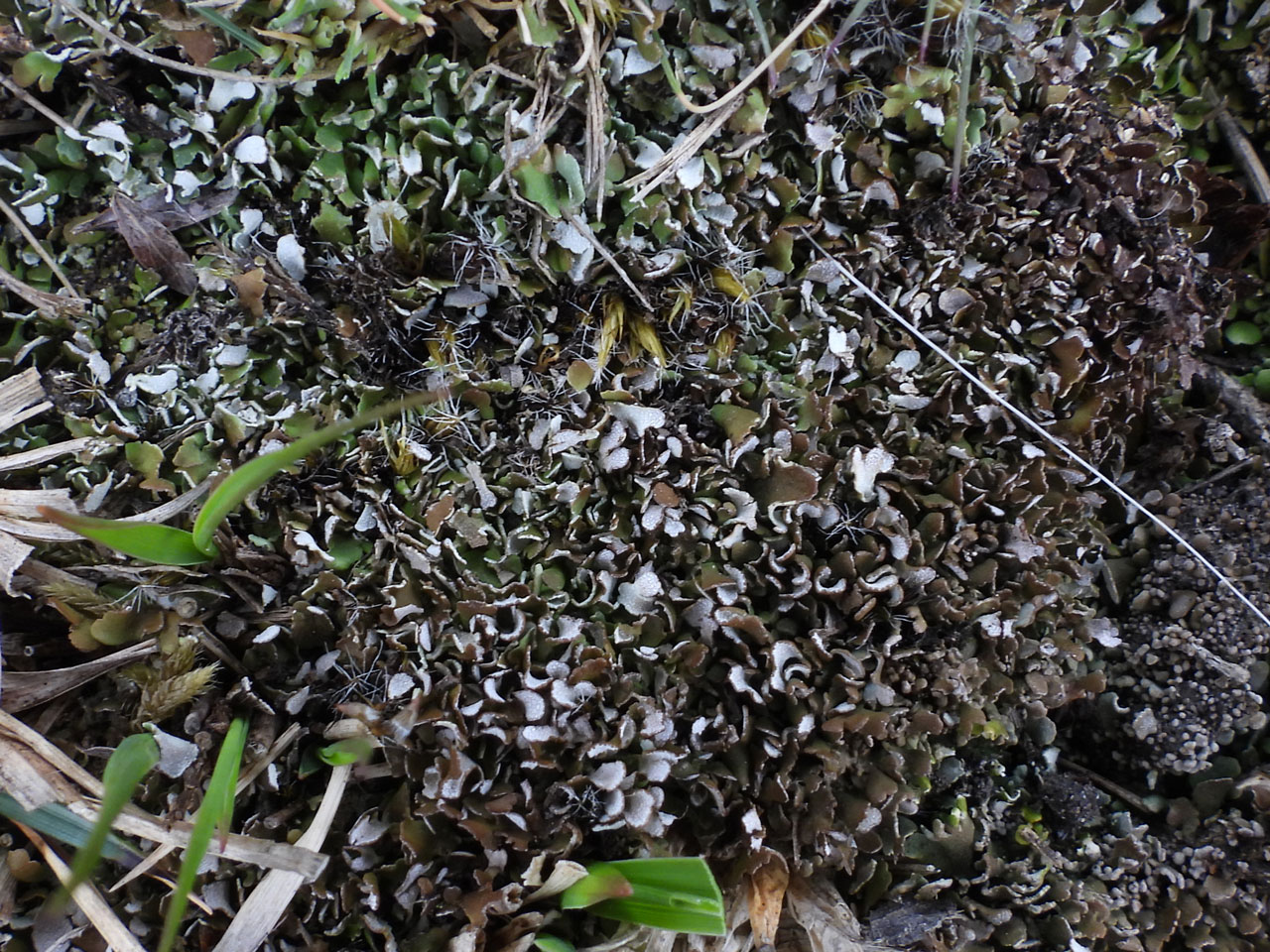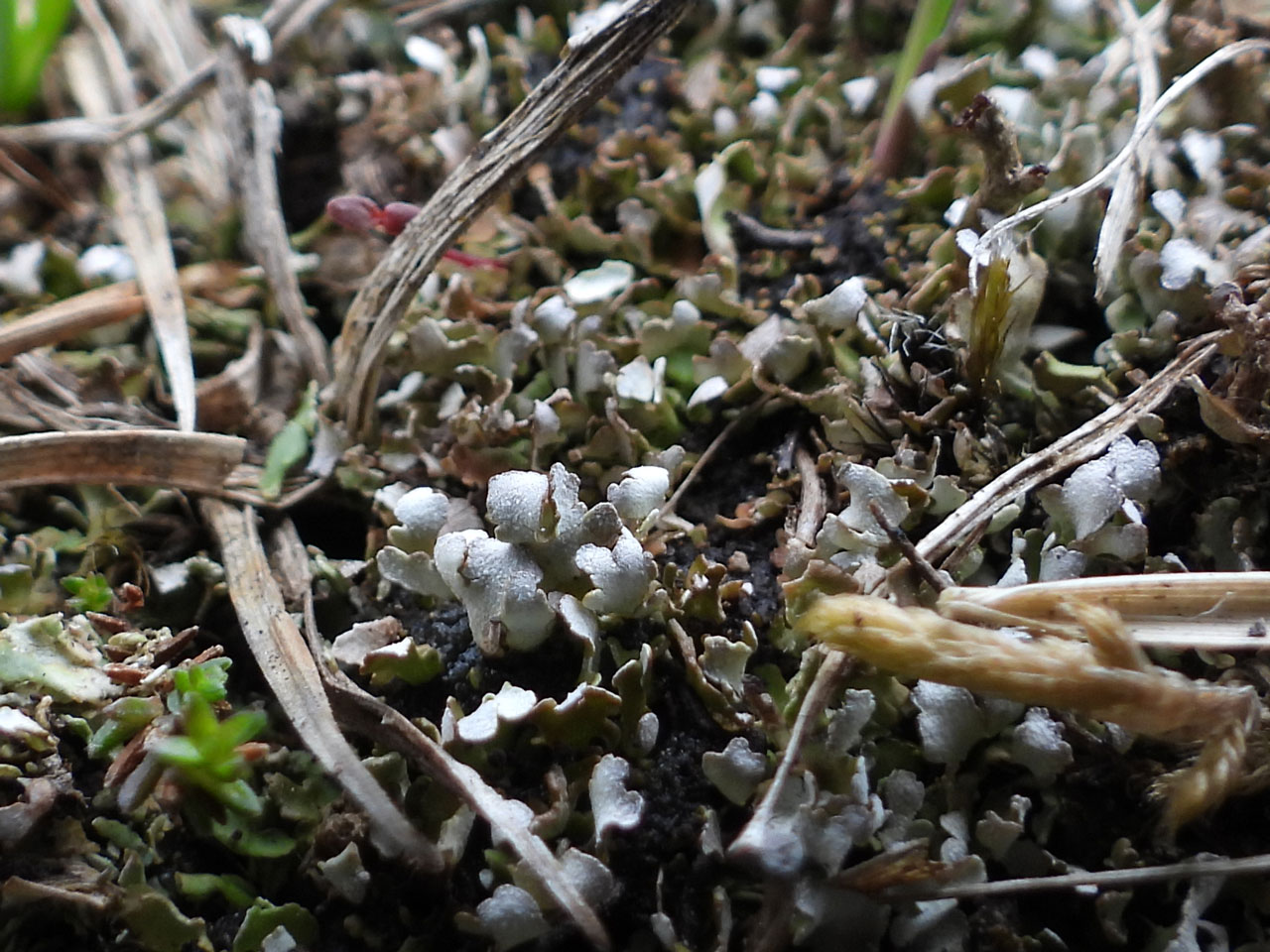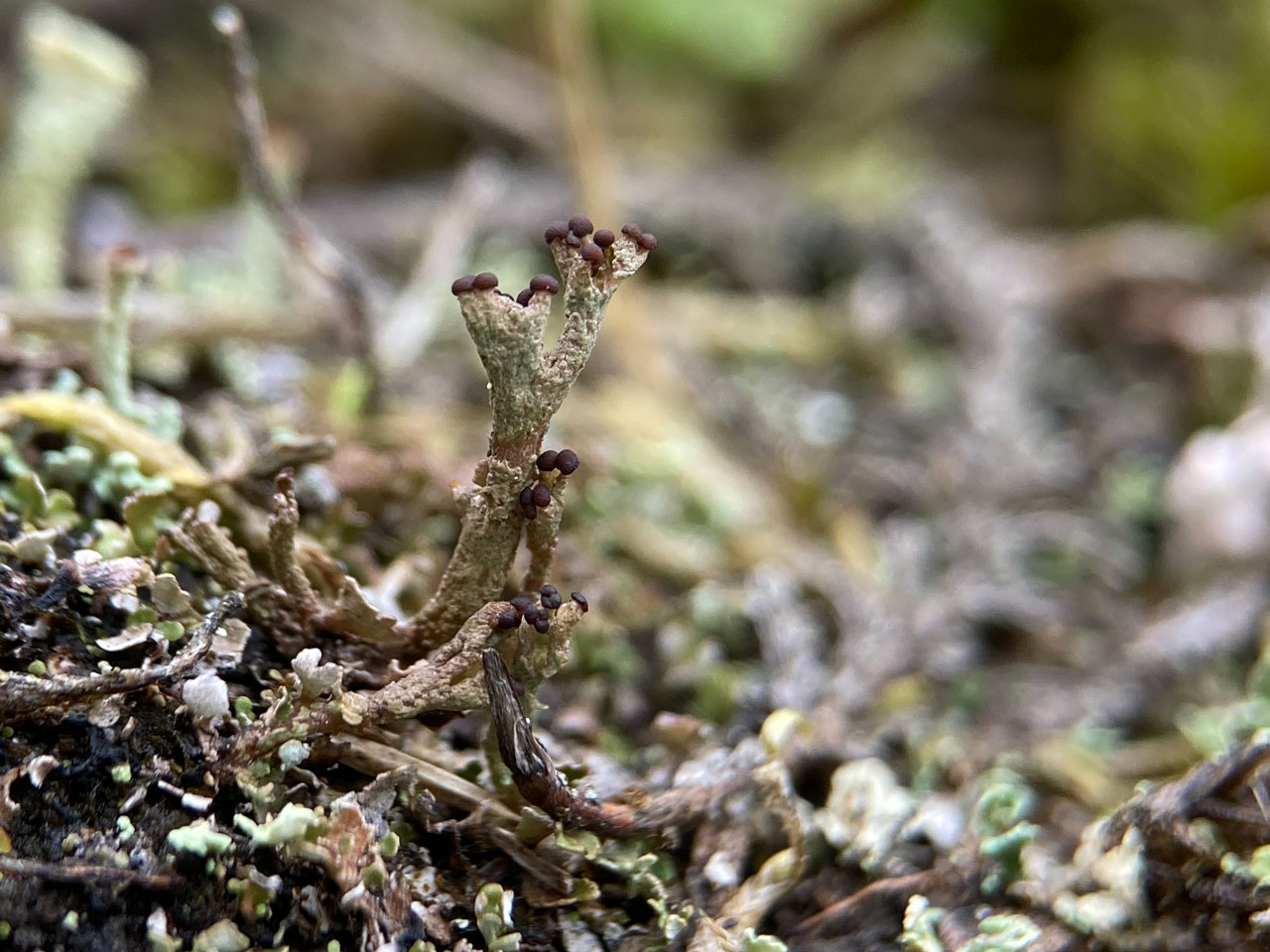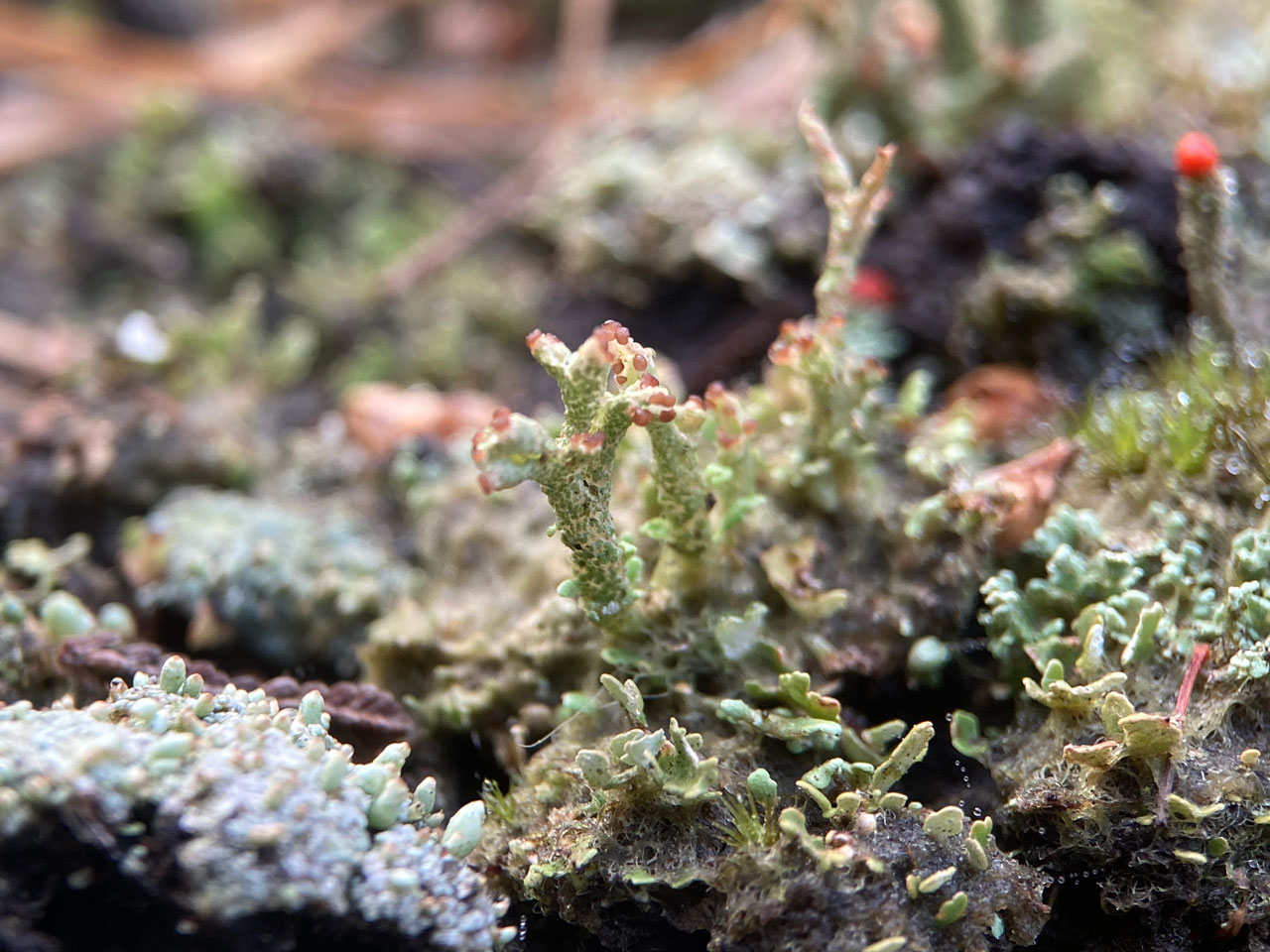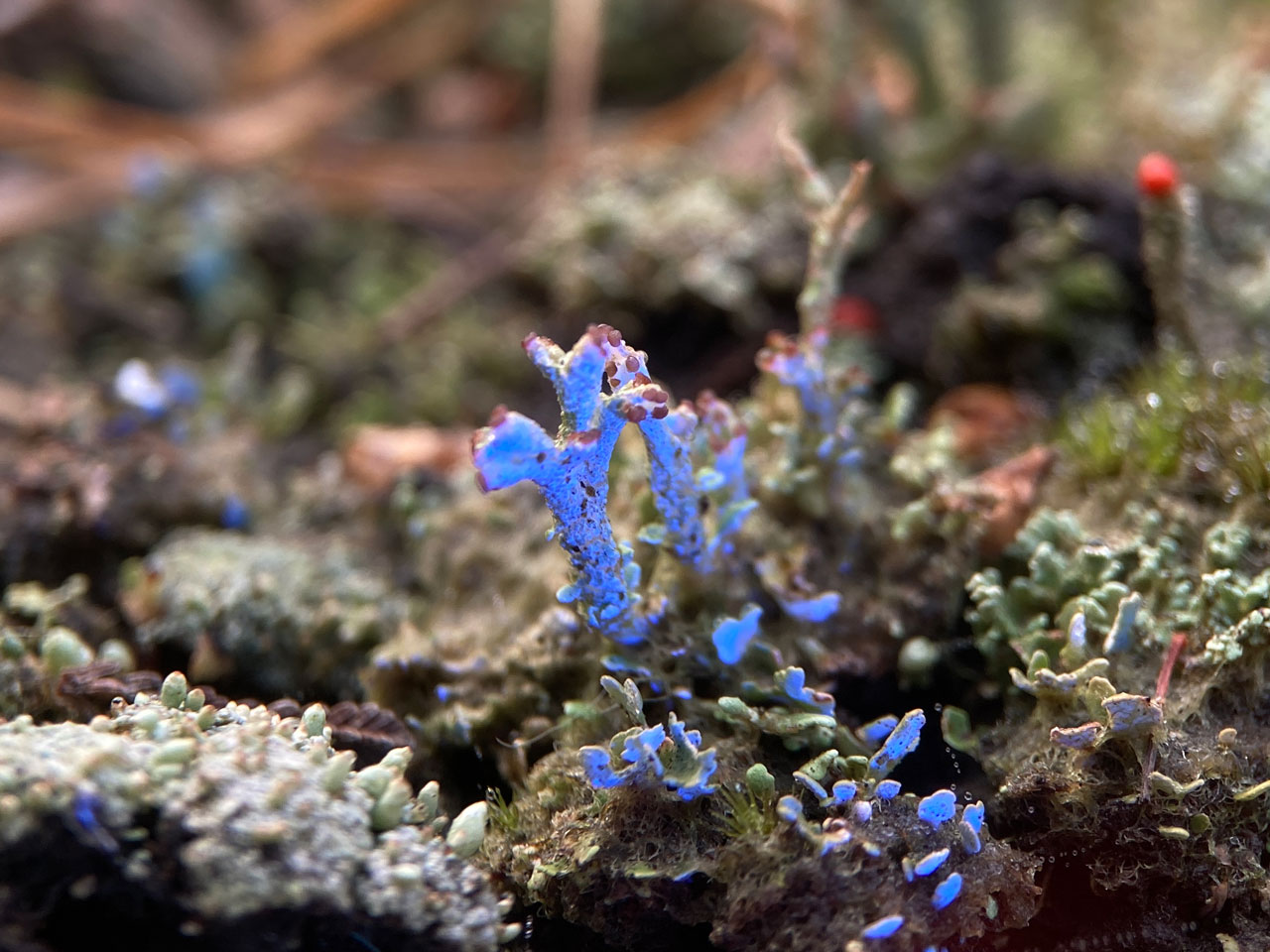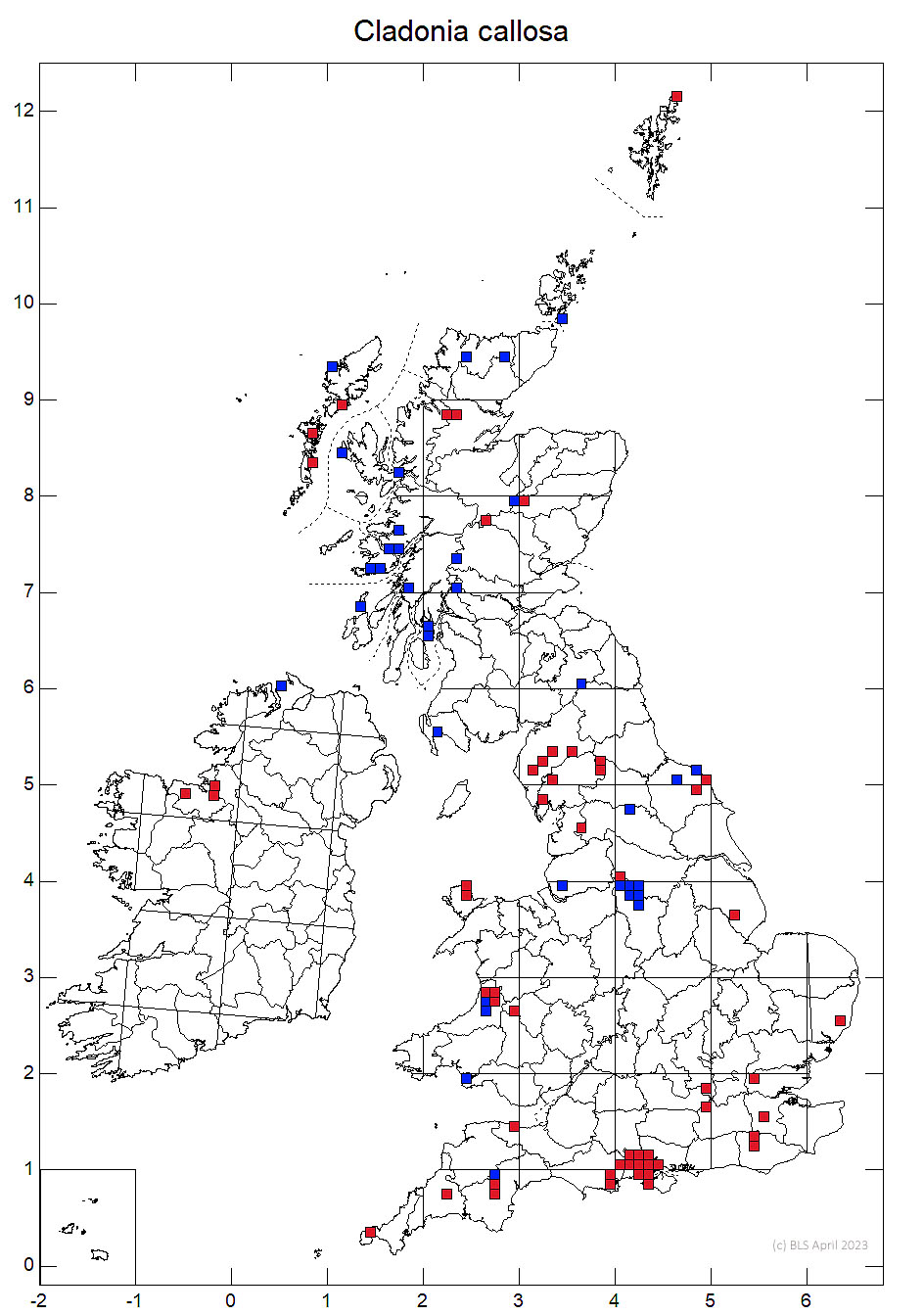A small Cladonia, of banks and open ground in heathland and moorland and post industrial sites, mostly occurring as sterile mats of basal squamules with brown to grey-green upper surfaces and bright white tomentose undersides, but occasionally supporting small distinctive branched podetia. It as a distinctive parma-violet UV fluorescence from grayanic acid.
Podetia to 1.5 cm tall, irregular, ± often branched, sometimes irregular cup-like around a ± central perforation at the apices, smooth or wrinkled, ± completely unevenly corticate or with a mosaic of grey areoles on a white decorticate surface, with scattered, mostly
inconspicuous fissures, becoming more decorticate and notably blackened when older, especially towards the base. Basal squamules 1–3 (–5) mm long, 0.5–1 (–2) mm wide, ± elongate, erect, incised, sometimes upwardly recurved, scattered or forming ± compact,
continuous mats, very brittle and fragile; upper surface grey, sometimes bronze- or brown-tinged, white and finely tomentose on the undersides. Apothecia ca 0.2 mm diam., brown, contiguous in terminal clusters towards and at the apices of podetia, sometimes on short projections from the squamule surface. Pycnidia dark brown, on basal squamules. Thallus C–, K–, KC–, Pd–, UV+ bright mauve-white (grayanic acid).
Often present only as brittle basal squamules, which can be identified by the unique combination of very bright mauve-white UV fluorescence and the white and finely tomentose undersides of the squamules. The most similar squamules are those of Cladonia crispata, but these are paler UV+ blue-white and have smooth white undersides. When olive or bronze-green in colour the squamules may be somewhat reminiscent of small morphs of C. strepsilis, which is C+ emerald green (strepsilin), Pd+ yellow, UV+ pale blue-white and has tougher, more coriaceous squamules. C. callosa may resemble morphs of C. ramulosa in lowland habitats which may also have brittle, but smaller, squamules, but is Pd+ red (fumarprotocetraric acid) and is UV–. It appears to have no close relatives, and occupies an isolated position at the base of the Cladonia clade (Stenroos et al. 2019).
The UV fluorescence is so bright that the species can be detected by scanning likely heathland banks and path sides with a UV lamp on overcast days.
On acid, sometimes waterlogged peaty or humic soils, at edges of peat hags, path edges and other recently bared ground, in lowland and montane heathlands, quarries and mine spoil heaps, rarely mossy woodland floors and damp lignum; probably a widespread, but extremely under-recorded, pioneer species of acid bare ground.
It appears to be quite a mobile species, being occasionally found in quarries and post industrial sites at some distance from more stable habitats.

Likely to be very under recorded and probably widespread in the uplands. Recent intensive surveying in the New Forest heaths found it to a widespread and characteristic species of lichen rich heathland here (Sanderson, 2017), but it appears to now be very local in the lowlands beyond the New Forest and rare in lightly managed heaths. Sampling in the uplands of Britain and Ireland suggests it is widespread here and is to be looked for anywhere with disturbed exposed humus or peat.
Worldwide it appears to be a western European endemic, found from Norway to France (Ahti & Stenros, 2013). Britain, with the Netherlands (Aptroot et al, 2011), is likely to support a large proportion of the world population.
A little known species but one than appears to be dependant on regular disturbance regimes and the maintenance of openness in heathland habitats. The species is frequent on the still traditionally managed New Forest, which suggests it would once have been frequent in many other lowland heathlands. Sampling suggests that it is now very rare now beyond the New Forest in the lowlands in lightly or unmanaged heaths but frequent and very over looked in the uplands. However, a survey of Ashdown Forest in 2020 (Cross & Sanderson, 2021), indicated that, as a pioneer species, it can respond rapidly to grazing restoration and quickly become frequent. Probably much less threatened in the uplands but could decline with abandonment of tradition moorland management.
Britain: Notable. If the lichen is widespread as sampling suggests, then the British population will be of international importance, so potentially an International Responsibility species.
Wales: Data Deficient
Ahti, T. & Stenros (2013) Cladonia. In: Nordic Lichen Flora, Volume 5 Cladoniaceae (ed. T. Ahti, S. Stenros & R. Moberg) 8-86. Uppsala: University of Uppsala.
Aptroot, A., van Herk, K. & Sparrius, L. (2011) Korstmossen van Duin, Heide en Stuifzand. Bryologische en Lichenologische Werkgroep van de KNNV
Cross, A. M. & Sanderson, N. A. (2021) Ashdown Forest SSSI: Site Dossier and Common Standards Monitoring of Heathland Lichen Assemblage. A Botanical Survey & Assessment report to Natural England.
Pino-Bodas, R., Sanderson, N., Cannon, P., Aptroot, A., Coppins, B., Orange, A. & Simkin, J. (2021). Lecanorales: Cladoniaceae [revision 1], including the genera Cladonia, Pilophorus and Pycnothelia. Revisions of British and Irish Lichens 26: 1-45.
Sanderson, N. A. (2017) The New Forest Heathland Lichen Survey 2011 – 2015. A report by Botanical Survey & Assessment to Natural England, Forest Enterprise & The National Trust. Link
Stenroos, S., Pino-Bodas, R., Hyvonen, J., Lumbsch, H.T. & Ahti, T. (2019). Phylogeny of the family Cladoniaceae (Lecanoromycetes, Ascomycota) based on sequences of multiple loci. Cladistics 35: 351–389 [publ. 2018].
Text by Neil A Sanderson, based on Pino-Bodas (2021)
